
Chanelle Adams – A Plant Lover’s Journey Through Research and Art
Chanelle Adams, an artist, researcher, and writer, combines her passion for plants with her deep intellectual curiosity. From childhood memories
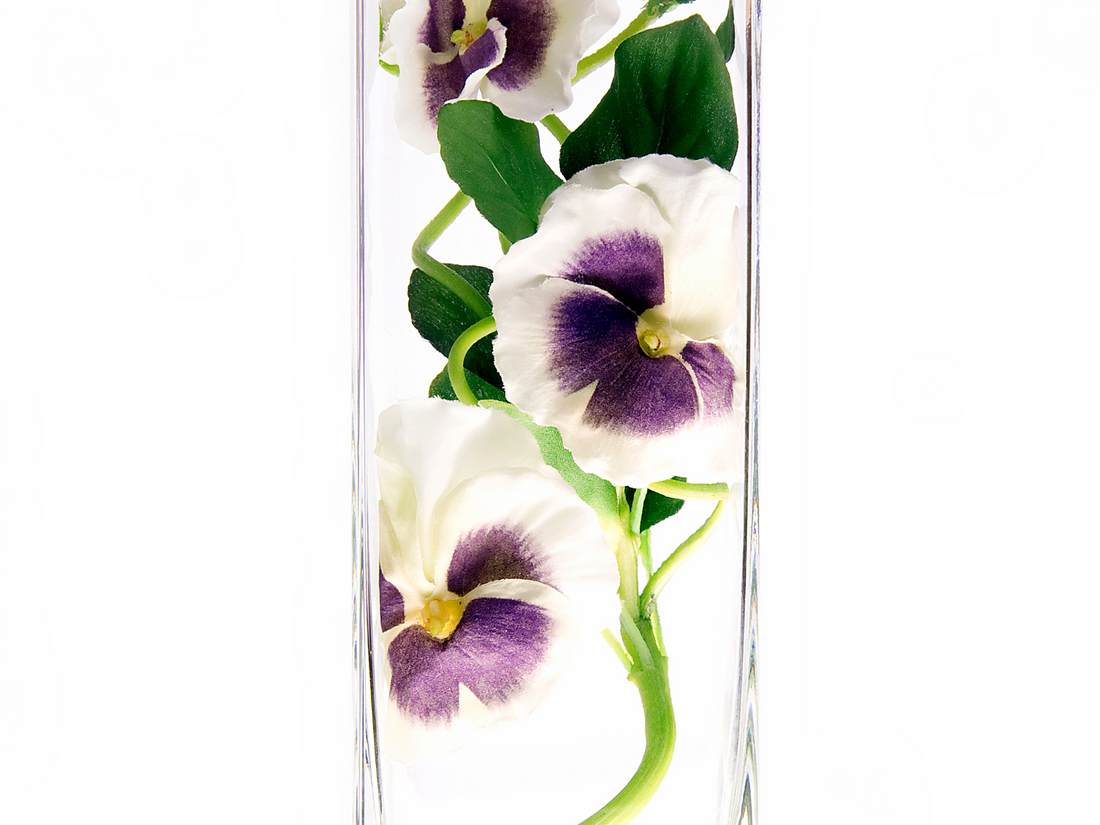
In the world of floral design, glass vases offer a unique canvas for artistic expression. Unlike traditional Western arrangements that focus solely on the flowers above the vase, Ikebana encourages us to consider the entire composition, including the glass and water. By following these guidelines and embracing the principles of Ikebana, you can craft breathtaking arrangements that captivate the eye and infuse your space with a cool, refreshing ambiance.
When working with glass vases, it’s essential to appreciate the display happening within the vase itself. In Ikebana, every element holds significance, and the glass and water become integral parts of the arrangement. Instead of solely focusing on the flowers emerging from the top of the vase, consider the entire composition and strive to make each component beautiful and harmonious.
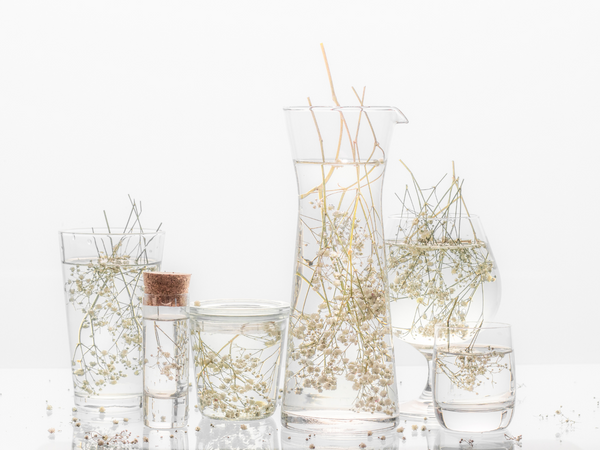
To create a successful Ikebana arrangement in a glass vase, avoid using kenzans (flower frogs) and explore alternative methods to secure stems. Opt for materials that can withstand submersion in water if you plan to incorporate them, such as tropical leaves or sturdy branches. By selecting durable elements, you can ensure that your arrangement maintains its beauty for an extended period.
You’ll notice when you are arranging, if submerging some elements under water, that your materials could float. You’ll need to play around with your materials to find the best position for them, that they can naturally stay in.
Clean water is crucial in glass vase arrangements, as it enhances the overall presentation. Ensure that the water in your vase is clean and free from impurities. To maintain freshness and prevent bacterial growth, replace the water regularly.
Glass vases come in various styles and colors, and all are welcome for your ikebana arrangements. Clear glass vases showcase the natural elegance of the flowers and foliage, allowing their beauty to shine through. Alternatively, experiment with colored glass vases to add depth and a touch of personality to your arrangement. Harmonize the color of the vase with the overall theme or color palette of your composition.
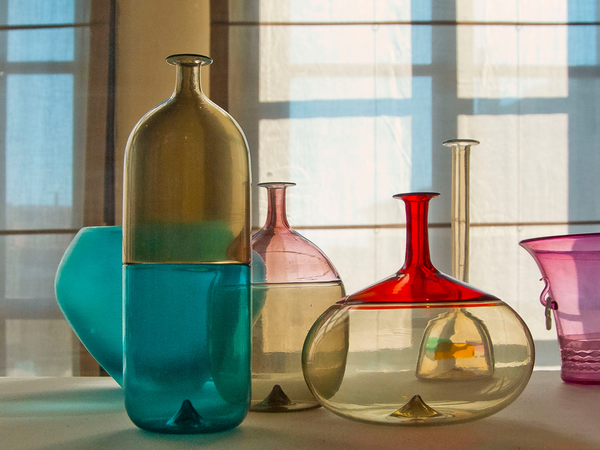
One of the fundamental principles of Ikebana is the art of negative space. When working with a glass vase, it’s crucial to leave room for serenity and visual balance. Avoid overcrowding the vase with an abundance of plant material. Embrace the minimalist aesthetic of Ikebana, where less is often more. The delicate interplay between the empty spaces, glass, and floral elements can create a captivating and harmonious arrangement.
Glass arrangements are particularly suited for the summer season, as they bring a sense of cooling and tranquility into your living space. The transparency and reflective qualities of glass interact beautifully with natural light, creating a serene atmosphere. Whether you choose clear glass to accentuate the airy feel or opt for colored glass to evoke a specific mood, glass vases can help you infuse your surroundings with a refreshing ambiance during the warm summer months.
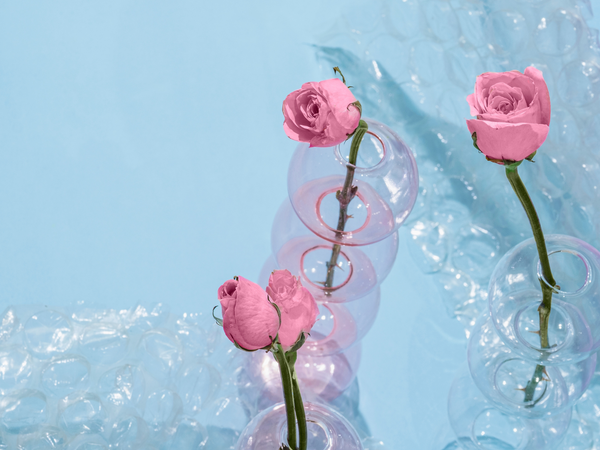
Creating Ikebana arrangements in glass vases opens up a world of artistic possibilities. By considering the glass and water as integral parts of the composition, you can craft visually stunning displays that transcend the conventional. So, gather your favorite blooms, select a beautiful glass vase, and immerse yourself in the captivating art of Ikebana—an art form where beauty exists in every detail, from petal to glass. Let the principles of Ikebana guide you as you create breathtaking arrangements that bring tranquility, elegance, and a touch of nature’s beauty into your space.
To continue your flower arrangement journey and learn more about Ikebana, join our online Ikebana Study Group with members from around the world.

Chanelle Adams, an artist, researcher, and writer, combines her passion for plants with her deep intellectual curiosity. From childhood memories
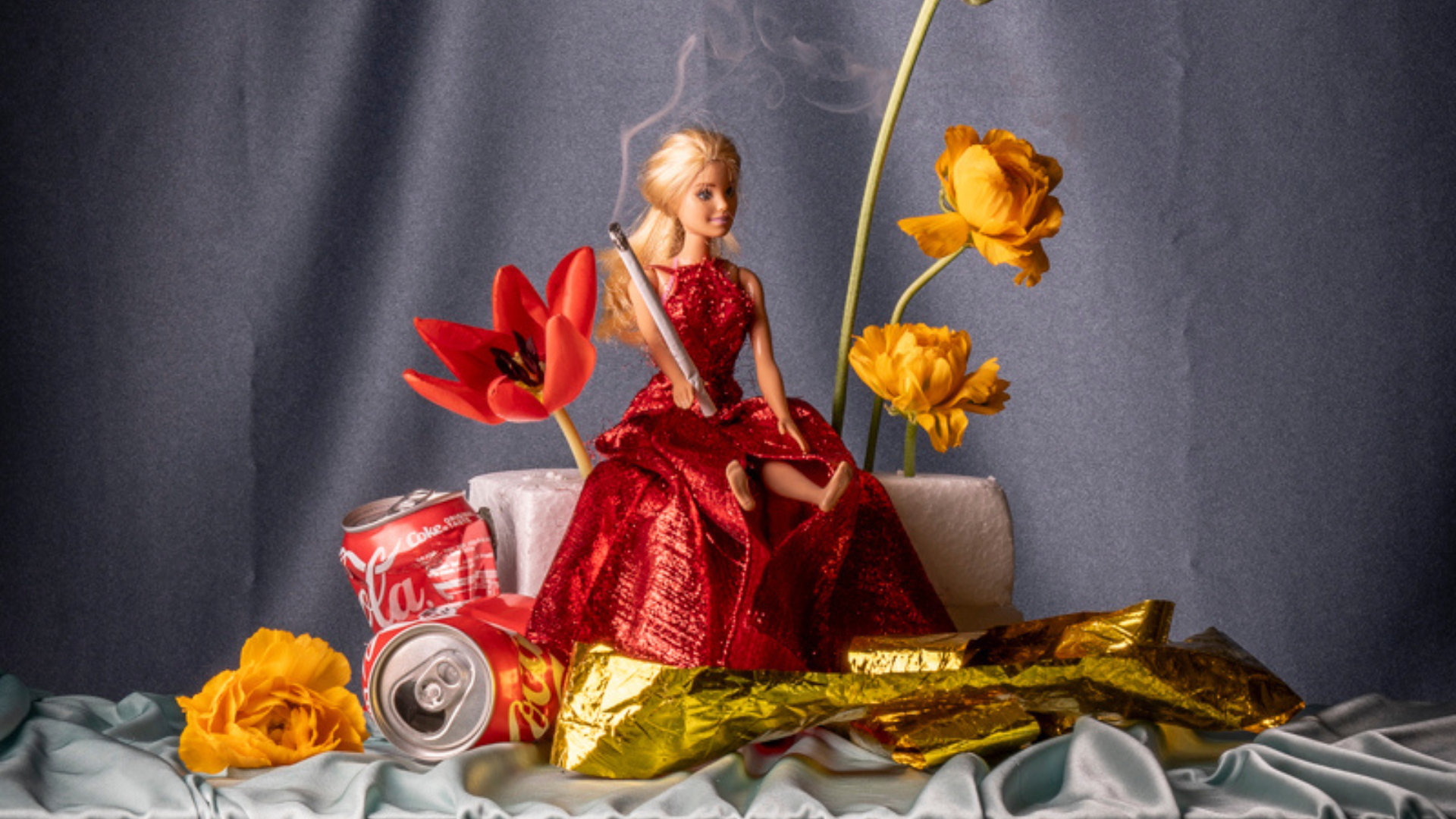
From the world of high fashion to the art of floral design, Kelly Ekardt has carved a unique path in